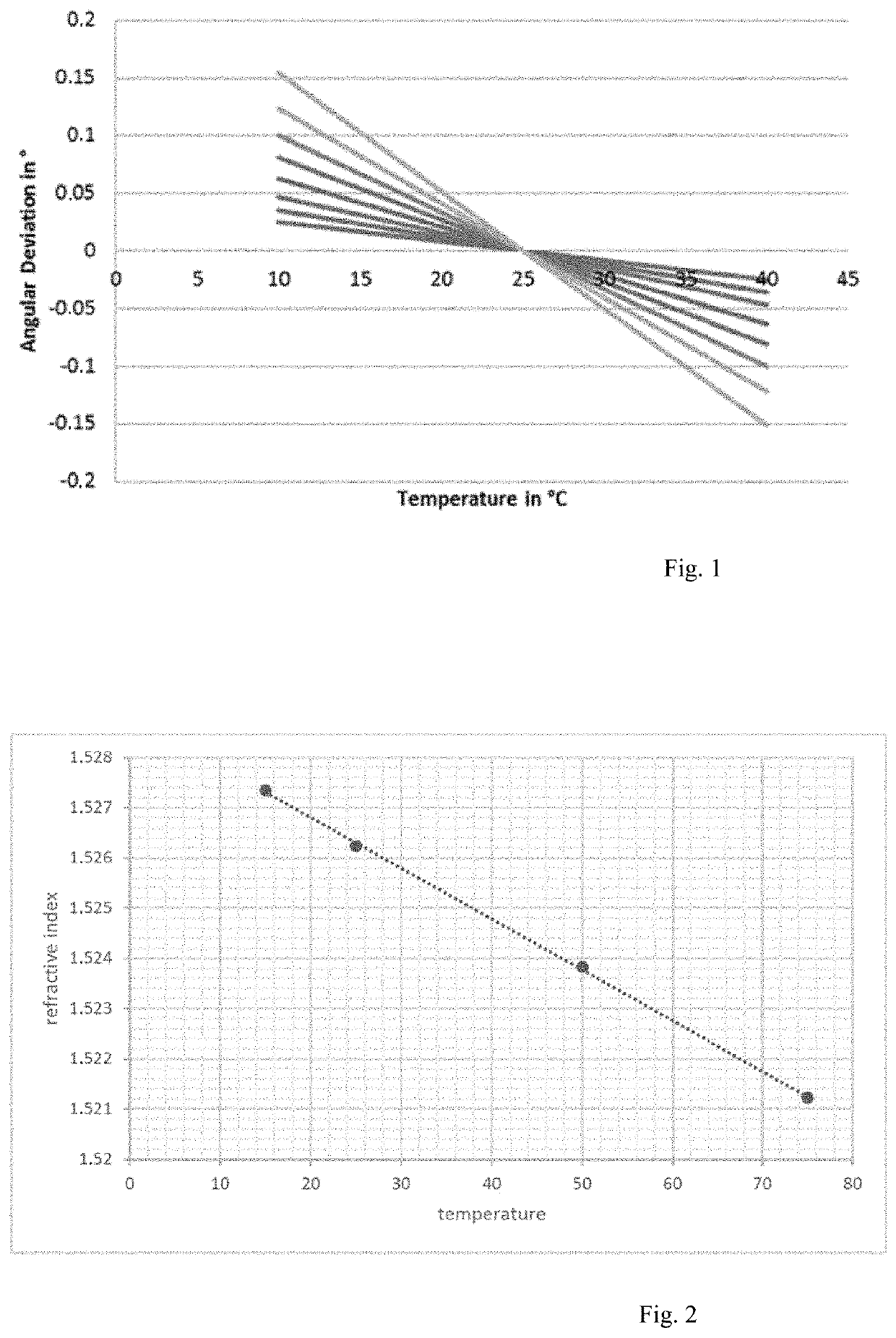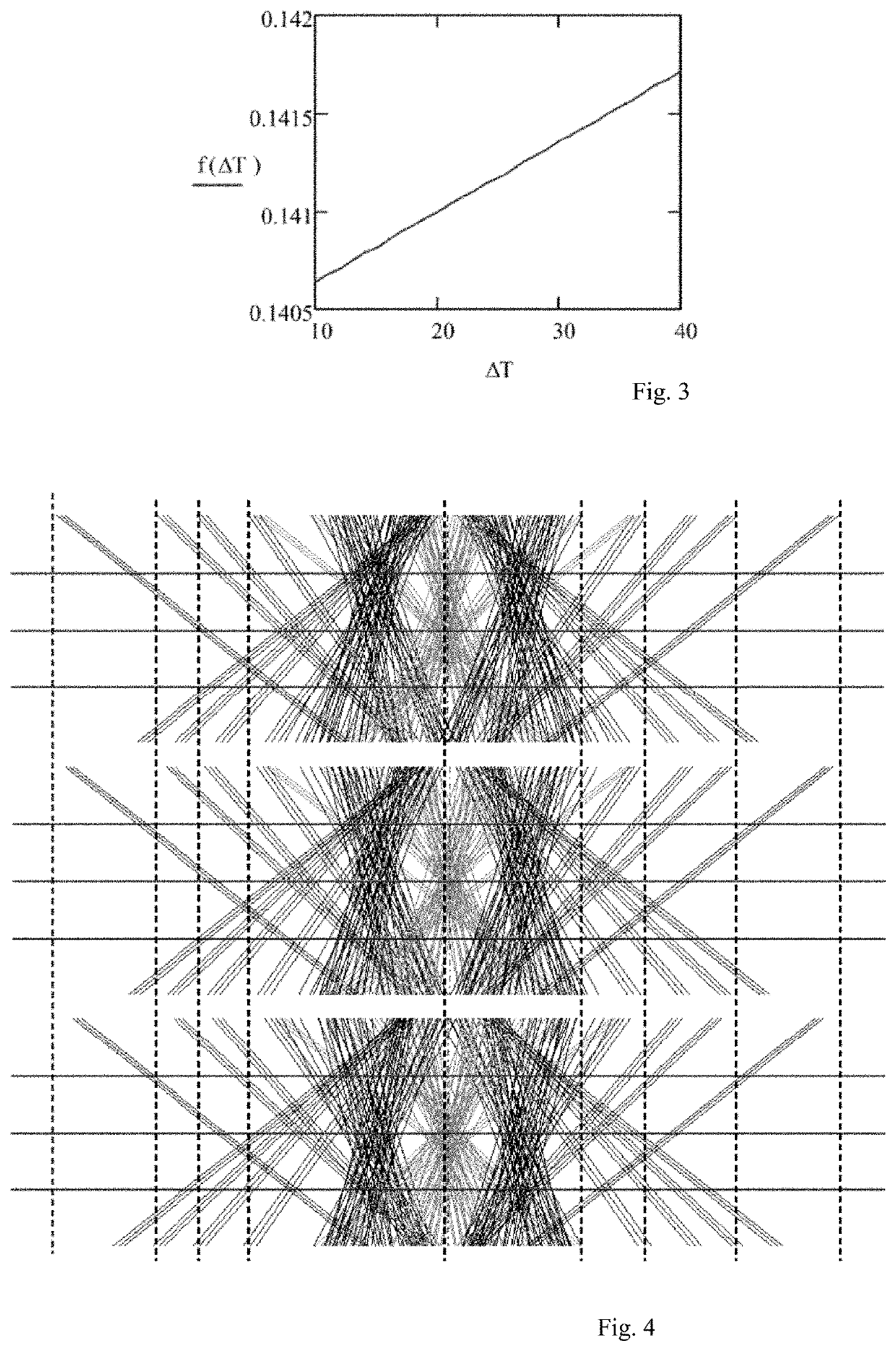Arrangement and method for compensating for the temperature dependence of a facet lens for determining the topography of an eye
- Summary
- Abstract
- Description
- Claims
- Application Information
AI Technical Summary
Benefits of technology
Problems solved by technology
Method used
Image
Examples
Embodiment Construction
[0017]Example embodiments of the invention are based on the use of a facet lens as described in DE 10 2011 102 355 A1, for example. In this case, the system consists of the facet lens, which is illuminated with planar waves by an illumination unit, an image recording unit, and a control and evaluation unit. In this case, the image recording unit is designed for telecentric, distance-independent image capture. As already mentioned, this type of topography measurement is advantageous in that displacements of the measurement system in relation to the patient's eye are merely expressed in the measurement data as an axial or lateral displacement of the entire point pattern in the camera image. This emerges from the fact that, on account of the measurement principle, the normal vector for each light dot on the corneal surface is geometrically known independently of the specific measurement and, for the purposes of reconstructing the surface, can be assigned to the respective light dot by ...
PUM
 Login to View More
Login to View More Abstract
Description
Claims
Application Information
 Login to View More
Login to View More - R&D
- Intellectual Property
- Life Sciences
- Materials
- Tech Scout
- Unparalleled Data Quality
- Higher Quality Content
- 60% Fewer Hallucinations
Browse by: Latest US Patents, China's latest patents, Technical Efficacy Thesaurus, Application Domain, Technology Topic, Popular Technical Reports.
© 2025 PatSnap. All rights reserved.Legal|Privacy policy|Modern Slavery Act Transparency Statement|Sitemap|About US| Contact US: help@patsnap.com


